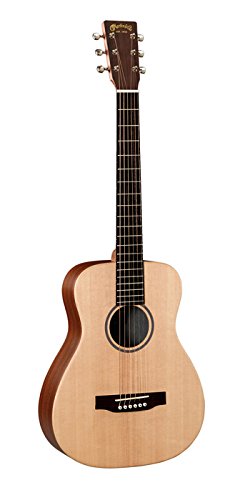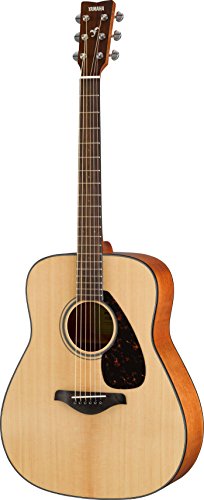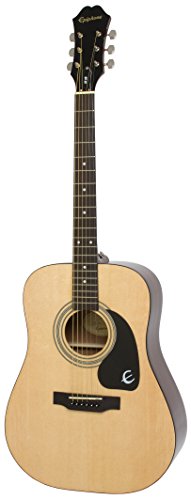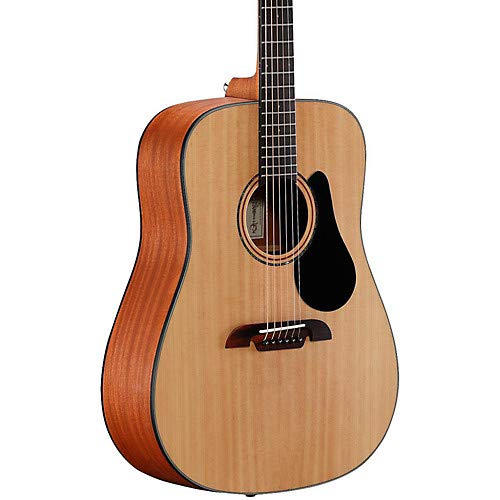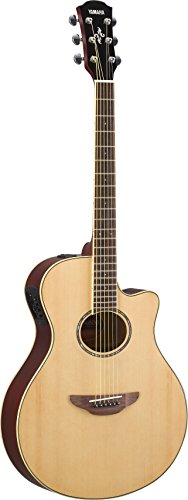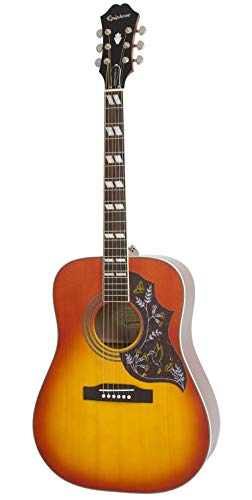Acoustic Guitars For Beginners: 8 Models That are easy to Play, and affordable
Research has shown that over 90% of new guitar players quit within the first year. The best way for you to avoid becoming a part of this statistic is to choose the right guitar, one that feels good, sounds great, and inspires you to keep playing.
As a beginner, the sheer number of acoustic guitars on the market may feel overwhelming, but that’s why we’re here to help. Keep reading, and you’ll learn all you need to know to find that perfect instrument and become a lifelong guitarist.
Fender CD-60S
Our top pick for a first guitar is the Fender CD-60S, an entry-level dreadnought acoustic with fine craftsmanship and quality tonewoods that belie its affordable price tag. This versatile instrument offers a lively tone and strong projection that sounds great whether you’re fingerpicking or strumming.
How to choose the best acoustic guitar for beginners
When it comes to choosing guitars for beginners, there are several unique considerations that might not apply to more advanced guitarists. With that in mind, this buyer’s guide is here to help you track down the perfect instrument and get started (1).
The irony is that a beginner in many respects deserves the best-playing guitar. An experienced player can make almost anything work; they’ll just appreciate a good guitar more. But when you’re starting out, you need everything going for you.
“Beginner guitar” can be a bit of a subjective term, because each new guitarist has their own priorities, but there are a few traits that are common to most guitars in this category. Let’s discuss them.
Prioritize easy playability
First of all, an acoustic guitar for beginners should be relatively easy to play, even for someone with untrained fingers. While sore muscles and fingers will be a necessary evil for most beginners as they adjust to new movements and body positions and their skin gets callused, if playing your guitar causes you consistent pain, there’s a good chance you won’t want to stick with it.
Body size
When picking out a guitar, first look for something with a body size that suits your stature. For example, smaller guitars are easier to learn on for children. Only the tallest players will feel comfortable starting out with a jumbo acoustic. The classic dreadnought is the most popular acoustic guitar shape, and most average sized adults will find this suitable. For a smaller player or a child, a parlor guitar or a scaled-down ¾-size dreadnought might be a better choice.
| Body Shape | Suitability for Beginners |
| Parlor | Excellent |
| Auditorium | Excellent |
| ¾-size dreadnought | Excellent |
| Dreadnought | Good |
| Grand Auditorium | Good |
| Jumbo | Poor |
| Classical | Poor |
Keep in mind that an acoustic guitar uses its hollow body as a means of noise projection, so smaller guitars won’t have the same booming bass notes that you would expect from larger models.
Some acoustic guitar designs also feature cutaways, which allow for easier access to the upper frets. Depending on how you like to play, the presence of a cutaway can alter your playing posture in either a positive or negative way, though they have been shown to have relatively little effect on the guitar’s sound (2).
Neck size and shape
The size and shape of the neck, known as the neck profile, is even more important than the size of the body when it comes to ease of playability. Though the neck profile doesn’t impact the inherent sound of a guitar, it influences how you play and thus the tone of your music.
There are six standard shapes of guitar neck, Oval C, Modern Flat Oval, U Shape, Hard V, Medium V, and soft V, and each shape can vary to some extent in its dimensions.
The most common shape for modern guitars is the Oval C, and this is also the best shape to seek out in guitars for beginners. This slender profile is comfortable for nearly all hand sizes, making it easier to form chords. As you advance, it also allows for faster play because the hand can move more freely around the fretboard. That said, a slender neck will be more prone to warping.
Typically, classical guitars aren’t recommended for beginners due to their wide neck profile. Though the nylon strings of classical instruments tend to be easier to manipulate than the steel strings of a standard acoustic guitar, a certain amount of hand and finger training is usually needed to navigate the wide neck without injury.
Scale length
The scale length of a guitar is the distance between the nut and the saddle, and it can vary considerably between guitars (3). A typical dreadnought acoustic has a scale length around 25”, while a standard bass guitar has a scale length of 34”. Three-quarter sized guitars, which are often designed with children or travel in mind, will generally have scale lengths well below 25”.
The scale length affects the playability of a guitar as well as how it sounds. For a beginner, a shorter scale length is often desirable because it means less tension is required to get the strings to pitch. This makes it easier to press the strings, and makes the treble notes easier to bend. On the other hand, a shorter scale means less tension while strumming and requires higher action, which can be more challenging for untrained fingers.
A shorter scale length also means that the frets will be closer together. For children or players with small hands, this will make the guitar easier to play and avoid possible finger strain as you adapt to novel hand positions.
Look for versatility
Different guitars are better suited to certain types of music. For example, the best guitars for fingerpicking tend to be small bodied with a wide fingerboard, and they clearly project individual notes and have a balanced tone. The best guitars for country music tend to have large bodies for a big booming projection, and they can stand up to heavy strumming.
If you are absolutely certain what style of music you want to play on your guitar, it is worth buying one particularly suited to the task, but for most beginners, this will not be the case. If you’re not sure what sound or style you prefer, the best choice is to opt for an all-arounder, a guitar with the versatility to play any style.
Find the balance between price and longevity
An acoustic guitar for beginners should be relatively inexpensive, though of course the term “inexpensive” itself is all relative. According to research, 90% of new guitarists quit within the first year (4), and this is particularly true of young players. If you’re just trying out the guitar, without a firm incentive to continue, or you’re buying a first guitar for a child, it makes sense to invest as little money as possible without sacrificing too much in terms of sound or build quality.
Though there are exceptions, and we have done our best in this article to point you towards guitars with high-end sound in a low price range, when it comes to guitars, you typically get what you pay for. And this doesn’t just apply to the guitar’s sound.
More expensive guitars with solid tonewoods and premium craftsmanship age better; their sound improves over time.
So if you’re certain of your intentions, there is no reason not to spend a little more money for a better acoustic guitar, as it will last longer and could save you money overall, provided you don’t quit.
The tonewoods dictate the sound
The woods used to build a guitar, known as the tonewoods, have the biggest influence on the guitar’s sound, especially the top wood, which is also fittingly known as the soundboard (5). While a beginner may not be as attuned to a guitar’s sound as a pro, choosing quality tonewoods with a sound you enjoy should still be a priority.
Spruce and mahogany are the two most common tonewoods, though you may also encounter cedar, maple, walnut, or others. Spruce, with its tight grain pattern, has a crisp sound well suited to strumming. Mahogany is a harder wood with a warmer sound that is often preferred for fingerpicking.
High-end guitars typically feature solid wood for the tonewood, but guitars for beginners are more likely to be composed of laminates, particularly for the back and sides. This allows these guitars to be offered in a lower price range, and few beginners possess a trained enough ear to recognize the difference.
Do you want to plug in?
If you want a guitar that can be plugged into an amp or soundboard, you’ll need to seek out an acoustic-electric guitar. These have electronic components installed inside, which can include a magnetic pickup, a piezo pickup, a built-in microphone, or a built-in tuner. The electronics allow you to project or manipulate the sound coming from your guitar, which makes an acoustic-electric a great choice for performing or recording.
While this versatility can be valuable, performance and recording are two aspects of guitar in which beginners rarely participate. You will have to weigh your likelihood of requiring electronics against the downsides of an acoustic-electric, which include increased costs and more things to go wrong.
The 8 best beginner acoustic guitars in 2020
Choosing a first acoustic guitar can feel overwhelming. There are so many options on the market, and as a beginner, it’s hard to know exactly what to look for. Luckily, we’re here to help with 8 great recommendations for guitars for beginners that are guaranteed to please.
1. Fender CD-60S - Best Overall
Specifications
Style: Dreadnought
- Dimensions: 45”L x 19”W x 7”D
- Top wood: Spruce
- Back and sides wood: Laminated mahogany
- Electronics: n/a
With more than 70 years of experience, Fender is perhaps the most iconic American guitar brand, known for both their high-quality acoustic and electric guitars. Their decades of expertise is particularly apparent when it comes to their budget models. While they still feature the premium craftsmanship that has made Fender so renowned, corners are cut in precisely the right ways to save money without sacrificing sound.
The entry-level Fender CD-60S is a perfect example. It balances great sound, low cost, playability, and versatility, making it our favorite acoustic guitar for beginners this year.
The dreadnought-sized body provides traditional full-bodied tone with plenty of projection. A great choice for any aspiring player, the CD-60S delivers a bold playing experience.
This guitar features a solid spruce top, while the sides and back are laminated mahogany. The slim mahogany neck is very hand-friendly, making it easy to get around the rosewood fretboard, and the non-cutaway design is a classic, simple but attractive.
When compared to other entry-level instruments, this guitar stands out for its perfect action. Typically, if the action is too high, the guitar will feel uncomfortable to play, and if it’s too low, you will hear string buzzing (6). The action on the CD-60s makes it easy and comfortable for novices to master finger tricks and other playing styles.
Though this instrument was built with beginners in mind, and priced accordingly, intermediate and advanced players can still find joy here. The tone is lively and well-balanced, making it an ideal instrument for any number of musical styles, whether strumming or fingerpicking. As expected from the dreadnought style, the projection is strong, and the bass notes are powerful without being boomy. As a result, many beginners will carry on with this guitar even as they progress.
2. Martin LX1 Little Martin - Best for Performing
Specifications
Style: ¾-size dreadnought
- Dimensions: 34”L x 12”W x 3”D
- Top wood: Sitka spruce
- Back and sides wood: Mahogany-patterned HPL
- Electronics: n/a
Martin Guitars specializes in acoustic guitars, and with a history stemming back to 1833, they have had plenty of time to master the art.
Befitting its name, the LX1 Little Martin is the smallest guitar they manufacture, though no sacrifices have been made when it comes to materials or build quality. It’s a scaled-down version of one of Martin’s famed full-size dreadnought acoustic guitars, but its high-end craftsmanship means it continues to offer a surprisingly robust sound.
The top is solid Sitka spruce, which gives a bright clarity to the high notes, while the sides are laminated mahogany. Inside, you’ll find the same high-end X-bracing seen on their top-of-the-line instruments. The result is a remarkably well-balanced tone, with the expected crisp highs and surprisingly rich and full bass notes.
The short scale, narrow neck, ¾-size body, and great versatility of sound make this an ideal guitar for beginners, including children. Indeed, it was originally designed for this purpose. However, the unique qualities of this small instrument has led to its adoption by expert players and even touring professional musicians, like Ed Sheeran (7), so it will serve you well even as you progress.
3. Yamaha FG800 - Best for Country Music
Specifications
Style: Dreadnought
- Dimensions: 41”L x 16”W x 4”D
- Top wood: Spruce
- Back and sides wood: Nato/Okoume
- Electronics: n/a
Yamaha’s FG series was introduced in 1966 and has been thrilling guitarists ever since. The FG800, in which the FG stands for “Folk Guitar,” is the latest iteration in the series, and it includes several valuable upgrades to the FG700 while maintaining the budget price that has made this line so popular over the past half century.
This classic dreadnought design has a solid spruce top, always a nice feature in a budget instrument, and the sides and back are made from laminated nato and okoume. These hardwoods are very similar in tone to mahogany, but less significantly expensive. The combination gives this guitar a warm and balanced sound that is well suited to either fingerstyle play or heaving strumming.
As compared with the FG700, it has new and improved scalloped bracing, which gives it a punchier tone and bigger projection, perfect for the country music enthusiast. The neck has also been revamped to be slimmer and tapered, with a fast satin finish for smooth and easy playing. The walnut fretboard has been redesigned with comfortably rounded edges.
The overall result is a guitar that provides more sound with less effort, a combination that’s ideal for a novice guitarist. If you’re a country music lover looking for a guitar that will progress with you from beginner to performer, it’s hard to beat the Yamaha FG800.
4. Epiphone DR100 - Best Bargain
Specifications
Style: Dreadnought
- Dimensions: 42”L x 18.5”W x 5.5”D
- Top wood: Select spruce
- Back and sides wood: Mahogany
- Electronics: n/a
Epiphone is another long standing American guitar manufacturer, first established over a century ago in 1873. In 1957, it was acquired by Gibson, a move that brought even more expertise in-house and greatly expanded its manufacturing repertoire.
When seeking a budget guitar, a good policy is always to look to the entry-level models from well-established brands like Gibson and Epiphone. While their inexpensive guitars may not have the same premium tonewoods as the higher-end models, they are still designed and built with the benefit of hundreds of years of experience.
As a great example, the DR100 is the lowest priced guitar on our list, but it still offers plenty of bang for your buck.
The major cost savings have come in the form of laminated tonewoods: select spruce for the top, which provides a lively, bright tone, and mahogany for the back and sides, which contributes depth and warmth to the sound. While these laminates won’t provide quite the same resonance as solid wood alternatives, few beginner guitarists will hear the difference.
In contrast, no money-saving sacrifices have been made when it comes to the design and playability of this instrument. It features Epiphone’s proprietary SlimTaper neck shape, which is comfortable on the hands and provides an ideal profile for a wide variety of playing styles.
5. Seagull S6 - Best for Fingerpicking
Specifications
Style: Dreadnought
- Dimensions: 40”L x 15.9”W x 4.9”D
- Top wood: Solid cedar
- Back and sides wood: Laminated wild cherry
- Electronics: n/a
The Seagull S6 is the most expensive guitar on our list, though still coming in under $500, but it will serve you in good stead as you progress. Seagull is a Canadian company known for making super-high-end guitars for top players, and the S6 is their entry-level model, making it the perfect choice for the committed beginner.
The S6 is handmade in Canada, one of few low-cost guitars still being manufactured in North America (8). Its body shape is described as a modified dreadnought, which offers full-range tone without any unwanted boominess.
It features a solid cedar top and laminated wild cherry back and sides. This unique combination of tonewoods, coupled with a thin yet durable finish, allow it to project a warm, detailed tone, with a crisp midrange and tight bottom end.
Every topwood used at Seagull, even in entry-level models like the S6, is pressure tested for rigidity and stiffness to ensure maximum harmonic vibration. And its unique compound curve adds structural integrity, allowing for thinner bracing and stronger projection. This commitment to detail, a hallmark of the Seagull brand and owner Robert Godin, is what has made these guitars so prized.
The neck, too, has been carefully thought out for optimal playability and tone. Seagull uses an integrated set neck, which provides stability and consistent action that also reduces warping and twisting.
One thing to bear in mind is that the nut width of the S6 is relatively large at 1.8”, so this guitar is better suited for adult beginners with larger hands.
6. Alvarez AD30 - Most Versatile
Specifications
Style: Dreadnought
- Dimensions: 40”L x 15.7”W x 4.3”D
- Top wood: Sitka spruce
- Back and sides wood: Mahogany
- Electronics: n/a
Alvarez’s award-winning artist series is characterized by solid wood tops and forward-shifted scalloped bracing, a combination that optimizes the tone of the instrument. The AD30 may be the lowest-end model in the series, but it benefits from the same premium design features and build quality as the rest of the line.
This dreadnought guitar has a solid Sitka spruce top, which is hand-selected to ensure consistent quality when it comes to stiffness, strength, and tightness of grain. The forward shifted bracing allows for a larger soundboard and thus better projection (9).
The back and sides are made from mahogany, and the remaining components are all made of natural materials, including mother of pearl and abalone inlays, real bone saddles and nuts, and rosewood appointments.
The end result is a responsive instrument that’s easy to play and yields a powerful sound that far surpasses its budget price point. The treble and bass notes are nicely balanced, and the tone is overall warm and open, giving this guitar excellent versatility when it comes to different musical styles.
7. Yamaha APX600 - Best Acoustic-Electric Guitar
Specifications
Style: APX Thinline Cutaway
- Dimensions: 42.2”L x 19.7”W x 5”D
- Top wood: Sitka spruce
- Back and sides wood: Mahogany
- Electronics: System 65A Preamp with Piezo Pickup, Built-in Tuner
If you’re looking for an acoustic-electric guitar to suit the novice player, the Yamaha APX600 is an excellent choice, offering Yamaha’s signature combination of affordability and high-quality craftsmanship. It includes a built-in tuner and a System 65A preamp piezo pickup, which provides a stunning natural acoustic tone. This is a guitar built for coffeehouse gigs and talent shows.
Yamaha makes an effort to source tonewoods locally, a move towards sustainability and environmental stewardship. The APX600 has a solid Sitka spruce top, a welcome surprise for an acoustic guitar priced below $500, and mahogany back and sides. The result is a guitar with a nicely balanced tone that sounds fantastic whether plugged in or not.
Its thinline cutaway body style makes it light and comfortable against the body, and the cut-out provides easy access to the upper frets. The rosewood fretboard offers great feel and easy playability.
8. Epiphone Hummingbird Pro - Best for Rocking Out
Specifications
Style: Dreadnought
- Dimensions: 44”L x 19”W x 6”D
- Top wood: Spruce
- Back and sides wood: Mahogany
- Electronics: Fishman Sonitone
The Hummingbird Pro is instantly recognizable as a classic rock n’ roll acoustic. Gibson first introduced the Hummingbird in 1960, when it was the company’s second most expensive guitar, and it has retained its popular following ever since.
Luckily, Gibson subsidiary Epiphone offers a version of the Hummingbird that retains much of the original design at a fraction of the cost. If you’re learning the guitar in order to channel Keith Richards or Grace Potter, two famed Hummingbird players, the Epiphone Hummingbird Pro is your perfect starting point (10).
It’s a square-shouldered dreadnought acoustic-electric guitar, featuring the characteristic hummingbird pickguard and old-school faded cherry sunburst finish. It has a solid spruce top, mahogany back and sides, and a mahogany neck. This classic combination produces a balanced sound, with warm tones and a crisp treble.
It has a Shadow NanoFlex pickup located under the saddle. The Shadow system has been specifically designed to amplify sound with an acoustic feel, which means a bright top end. There are controls for volume, treble, and bass, as well as a mute, a dynamics control, and a battery level indicator. Though, disappointingly, it lacks a built-in tuner.
The Verdict
Learning to play a new instrument is never easy, so the most important part of choosing a beginner acoustic guitar is finding one you love to play. Look for something affordable that fits both your body and the style of music you want to play.
Our top pick for this year is the Fender CD-60S. This iconic brand’s entry-level dreadnought is finely crafted, with spruce and mahogany tonewoods that produce a lively and well-balanced tone with strong projection.
FAQs
Yes, you can teach yourself to play acoustic guitar. In this wonderous age of the internet and YouTube, the information is all readily available. That said, using a qualified instructor will ensure you learn proper technique and can help you stay motivated.
You should learn chords first, according to most instructors. Not only are they easier to master for new guitarists, but knowing a few chords allows you to quickly progress to playing basic songs, which can keep motivation high.
The best guitar for a beginner is the one that will keep you interested in playing. Electrics can be physically easier to play because of the lighter gauge strings, but acoustics are usually lighter, more portable, and less expensive.
References
- Parkin, J. (2017, February 9). How Much Should I Spend for My First Acoustic Guitar? Retrieved from https://blog.taylorguitars.com/buyers-resources/how-much-should-i-spend-for-my-first-acoustic-guitar
- Dablow, A. (2017, July 19). Acoustic Guitar Cutaways vs. Non-Cutaways. Retrieved from https://blog.taylorguitars.com/acoustic-guitar-cutaways-vs-noncutaways
- Keith, M. (2020, April 28). Ask the Expert: Understanding Scale Length. Retrieved from https://acousticguitar.com/ask-the-expert-understanding-scale-length/
- 90% of New Guitarists Quit in First Year, and That’s Why Fender Is Going Digital. (2015, October 5). Retrieved from https://www.ultimate-guitar.com/news/general_music_news/90_of_new_guitarists_quit_in_first_year_and_thats_why_fender_is_going_digital.html
- Perlmutter, A. (2016, August 30). A Tonewood Primer: How to Pick the Right Materials for Your Optimal Sound. Retrieved From https://acousticguitar.com/a-tonewood-primer-how-to-pick-the-right-materials-for-your-optimal-sound/
- Guitar Setup: What is the right string height for my guitar? (2019, December 3). Retrieved From https://www.sweetwater.com/sweetcare/articles/guitar-setup-what-is-the-correct-string-height-for-my-guitar/
- Summer NAMM 2013: Martin announces Ed Sheeran LX1E signature guitar. (2013, July 9) Retrieved from https://www.musicradar.com/news/guitars/summer-namm-2013-martin-announces-ed-sheeran-lx1e-signature-guitar-579851
- Does It Matter Where Guitars Are Made? (2017, October 23). Retrieved from https://www.sweetwater.com/insync/matter-guitars-made/
- Somogyi, E. (1993). Principles of Guitar Dynamics and Design Retrieved from https://esomogyi.com/articles/principles-of-guitar-dynamics-and-design/
- Margotin, P., Guesdon, J-M. (2016). The Rolling Stones All the Songs: The Story Behind Every Track. Black Dog & Leventhal. Retrieved from https://www.amazon.com/Rolling-Stones-All-Songs-Behind-ebook/dp/B01FRAZH5A?tag=campfiremusiciangeneral-20

